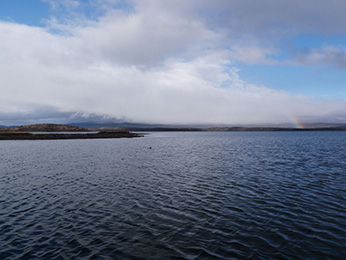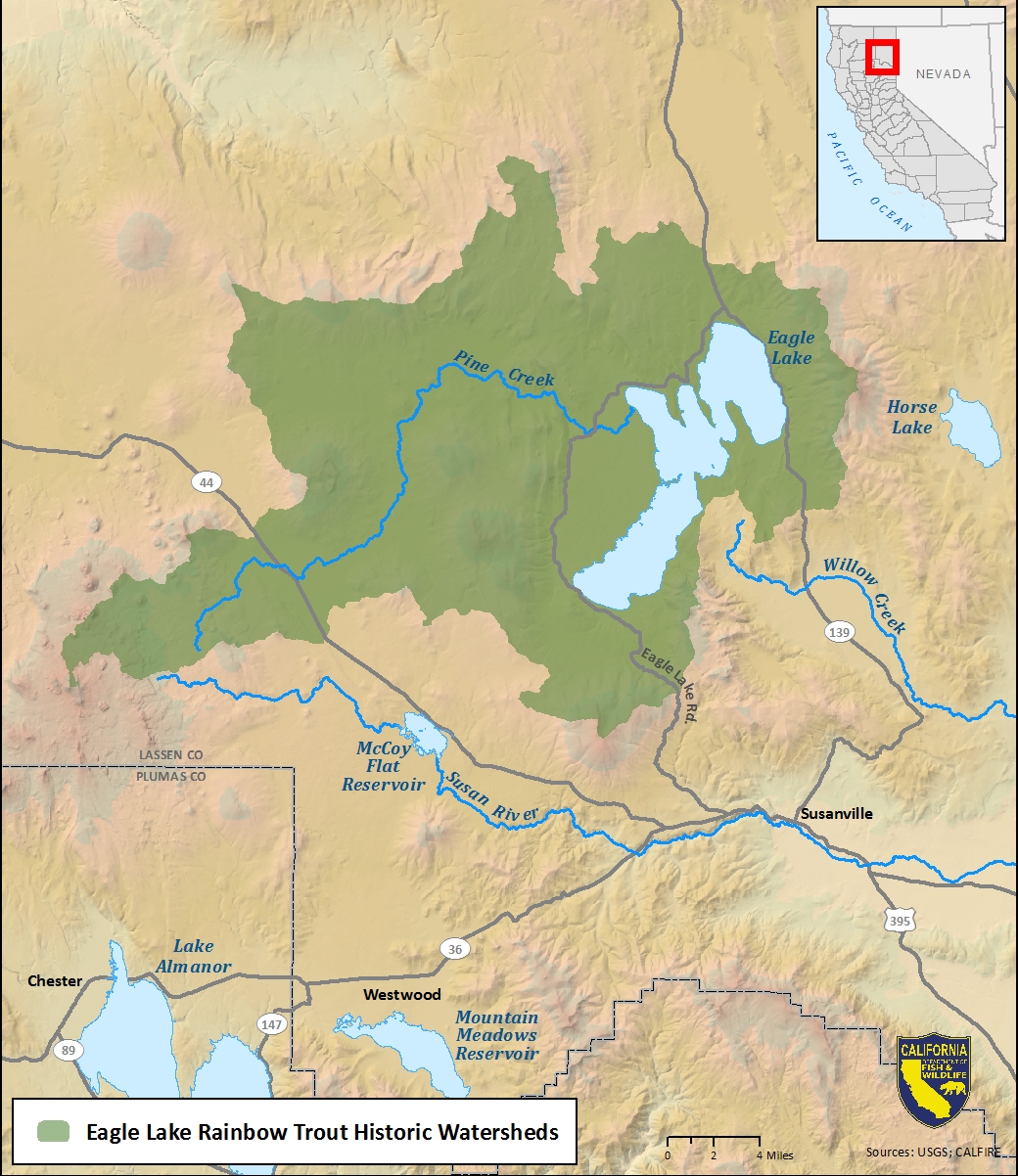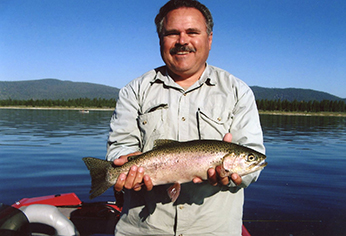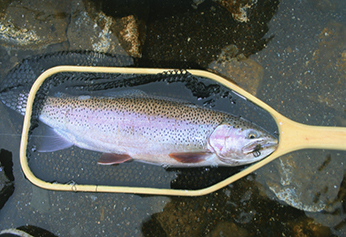Identification
- Similar in appearance to coastal rainbow trout.
- Lateral line has a pink band, fins with white edges, and irregularly-shaped spots are profuse.
- Spots wane towards the belly, scales are finer than on coastal rainbow trout, and the snout is quite rounded.
- The predatory nature of life in a lake environment lends itself towards fish with large, squared-off tails for propulsion, large eyes, and increased body size.
- The average Eagle Lake rainbow trout reported in recent creels is about 18 inches in length and two pounds, although they have been known to reach upwards of 28 inches and ten pounds.
Distribution
- Endemic to Eagle Lake and its main tributary, Pine Creek.
- Due to fast growth rates, potential for large size, and prized fighting ability, Eagle Lake rainbow trout are stocked into numerous waters across California to provide additional sport fishing opportunities.
 Eagle Lake.
Eagle Lake.
 (click to enlarge)
(click to enlarge)
Angling
 Angler with catch from Eagle Lake.
Angler with catch from Eagle Lake.
 Angler-caught Eagle Lake rainbow trout.
Angler-caught Eagle Lake rainbow trout.
Fishing Conditions
Eagle Lake accommodates all types of anglers. Weather and time of year often dictate where the fish are located, how deep they are in the water column, and what gear is most effective.
Trolling
- Popular any time of year and is especially good during the warmer summer months when fish spend more time in the deep waters of the south basin.
- Use heavy lures or downriggers to target deep-holding fish.
Float tubes or pontoon boats
- Popular in the fall when Eagle Lake rainbow trout spread out from the south basin and occupy all areas of the lake.
- Be aware of incoming weather and associated strong winds. Stay close to shore to avoid being blown out into the lake if using small watercraft.
- Use patterns that imitate tui chubs.
- Flies such as leeches, wooly buggers, snails, scuds, and small baitfish patterns are effective.
- Flashy body materials, coupled with marabou tails in rust, orange, brown, green, white, or combinations thereof are standard fare.
- Heavy bead heads or jig patterns are excellent as they provide an up and down swimming action when stripped or trolled.
Bait and fly fishing
- Fishing from shore in the fall and early winter months can be very effective.
- Tackle mentioned above is suggested when shore fishing.
- Target areas of structure, such as submerged rocks and tule beds.
Eagle Lake rainbow trout seem to aggregate in groups and, while a location can be “dead” for some period of time, an incoming group of feeding fish can change the scenario dramatically. Periods of inclement weather seem to increase angler success, so worse weather usually means better fishing. A stormy day and wading in just the right spot may lead to a catch of 20 fish or more.